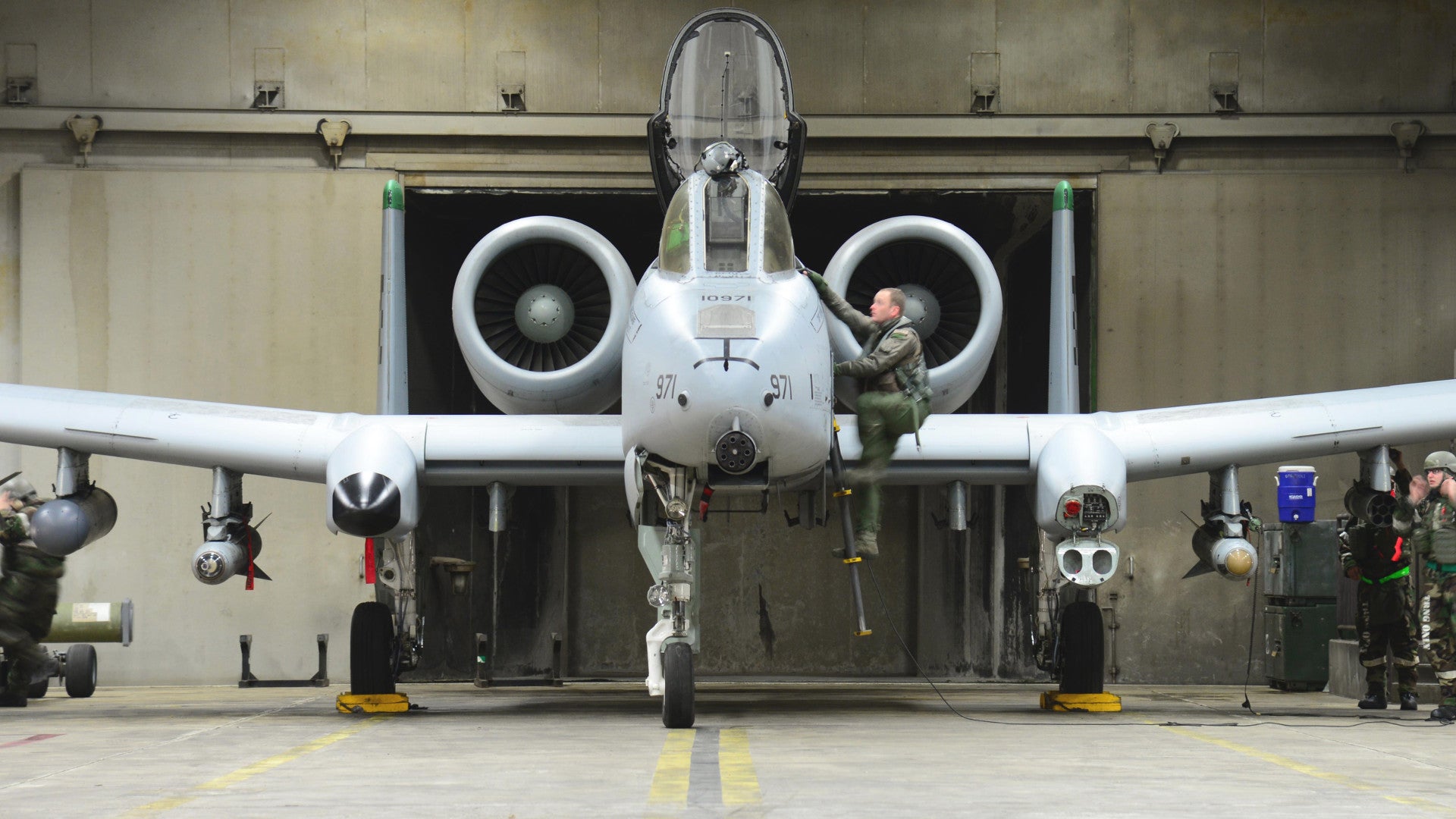The U.S. Air Force has so far been able to avoid grounding dozens of its A-10 Warthog ground attack aircraft that are still waiting for vital replacement wings. Unfortunately, serious questions remain about how long the service will be able to keep the entire fleet active, and whether it even really plans to, despite what had appeared to be increasing support from senior officials.
During a hearing before the House Armed Services Committee on April 12, 2018, U.S. Air Force Lieutenant General Jerry Harris, the service’s Deputy Chief of Staff for Plans, Programs, and Requirements, offered new information about the state of the A-10s. We at The War Zone had separately reached out for additional updates regarding groundings across the fleet, which includes aircraft assigned to active and reserve component units in the Air Force Reserves and Air National Guard.
As of April 2018, “zero active or reserve component A-10s are grounded for a lack of serviceable wings,” the Air Force Life Cycle Management Center’s Fighter Bomber Directorate, which oversees the A-10 program, told The War Zone in a statement by Email. “The Air Force has used a collaborative approach between AFMC [Air Force Materiel Command] and the Using Commands and their units to alleviate groundings in [fiscal year 2018].”
The A-10 re-winging program is a saga we at The War Zone have delved into many times in the past, but it’s safe to say that it was an unforced error on the part of the Air Force. Despite initial plans in 2007 to upgrade all of its approximately 280 aircraft with new “thick” wings, the service stopped after a little more than 170 had received the modifications.
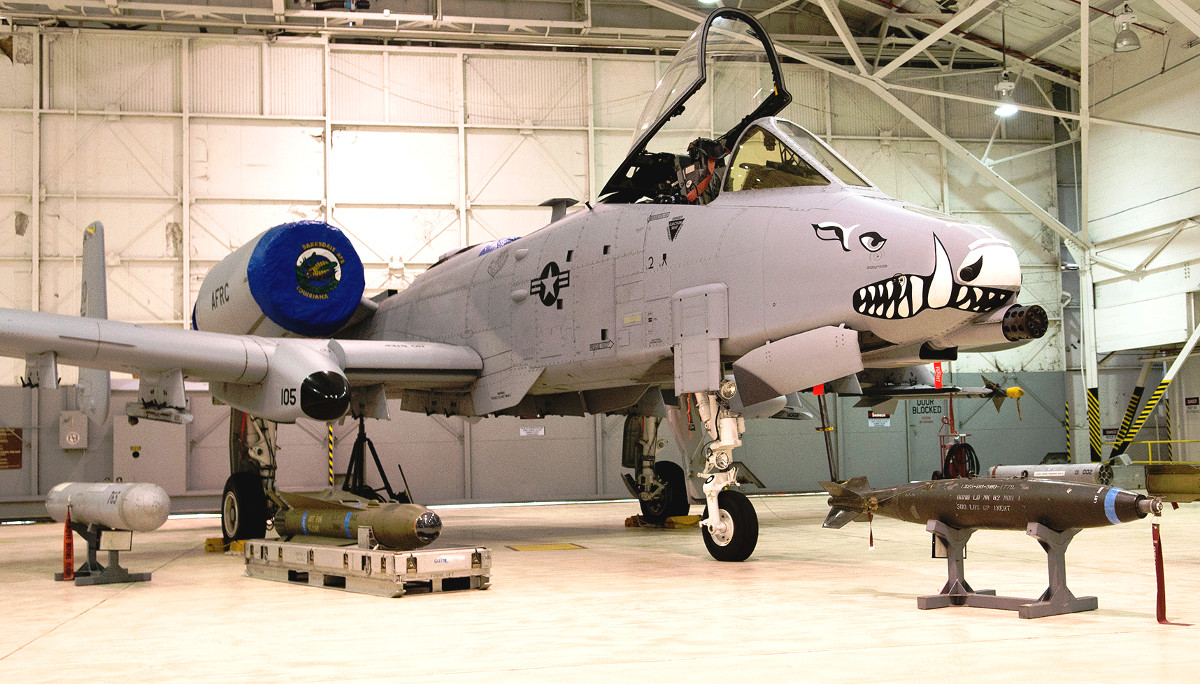
Now, nearly 110 Warthogs continue to lack the new wings, which could keep them airworthy into the 2030s. In September 2017, U.S. Air Force General Ellen Pawlikowski, head of Air Force Materiel Command, said some of those aircraft could end up stuck on the ground for safety reasons by the beginning of the 2018 fiscal year, which began on Oct. 1, 2017.
At the time of writing, the Air Force has not yet responded to our request for clarification as to what the collaborative approach it is using to avoid those groundings entails. However, at the hearing, Harris said that A-10s that were getting close to becoming unsafe to fly would rotate into the service’s backup inventory.
We also do not know an approximate number of A-10s that are classified as “not mission capable” because they are undergoing depot maintenance, receiving upgrades or modifications, are broken down at a deployed location overseas. We do know that beyond the wing issue, no Warthogs were grounded for any reason as of April 2018.
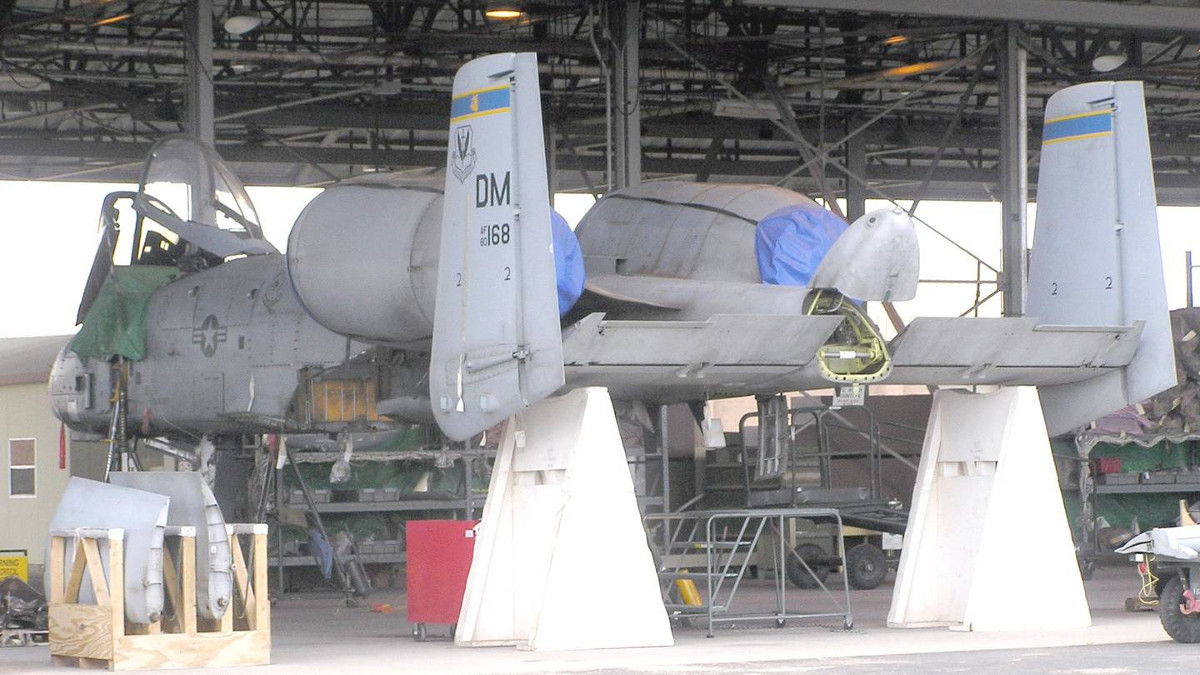
But needless to say, this is, at the very best, a short-term solution. Those backup aircraft, if they had to go back into service for any reason, would be facing the exact same life cycle issues and would likely have relatively few flight hours left before they would stop being safe to fly.
This accounting trick also almost certainly has to rely on poaching suitable planes from one unit in order to give them to another in order to meet operational demands in places such as Iraq and Syria, Afghanistan, and South Korea. This sort of arrangement could only reduce the number of airworthy Warthogs left over for flight training and other activities help pilots remain proficient with the type.
It’s also worth noting that in 2015, the Air Force attempted to circumvent legislation barring the service from retiring any A-10s by putting more than a dozen aircraft into backup status. This prompted an outcry from lawmakers, which forced it to reverse its plans.
The video below offers a great look at the A-10’s combat contributions in Afghanistan. You can read here about why the Air Force tried to suppress its release.

Overall, it’s a process that could quickly have diminishing returns and still lead to groundings before any new wings arrive. In March 2018, Congress passed a massive omnibus spending package that included $103 million to pay to restart production of the necessary components and buy four complete wing sets. The Air Force’s budget request for the 2019 fiscal year includes nearly $80 million for another eight to 12 sets. But the service doesn’t expect to issue a formal contract for the work until sometime in 2019 and it’s unclear when the actual upgrades would start, let alone be complete.
“We are not confident we are flying all of the airplanes we currently possess through 2025,” Harris Lieutenant General had to concede in the April 2018 hearing. “We will have to get back to you on the groundings per year, per airplanes,” he added in a response to pointed questions from Martha McSally, a Republican Representative from Arizona and former A-10 pilot herself, who has been an outspoken critic of the service’s decisions regarding the aircraft.
According to Harris, the Air Force does not want to commit to maintaining the full A-10 fleet until a fly-off between the Warthog and the F-35 Joint Strike Fighter occurs. The service has long said it wants replace the ground attack aircraft entirely with the stealthy fighter multi-role jets, but Congress has demanded a comparative demonstration as part of the up-coming initial operational test and evaluation process. As noted, there seemed to be increasing support for the Warthog at the highest levels of the service, but how sincere that was and to what extent is now increasingly questionable.
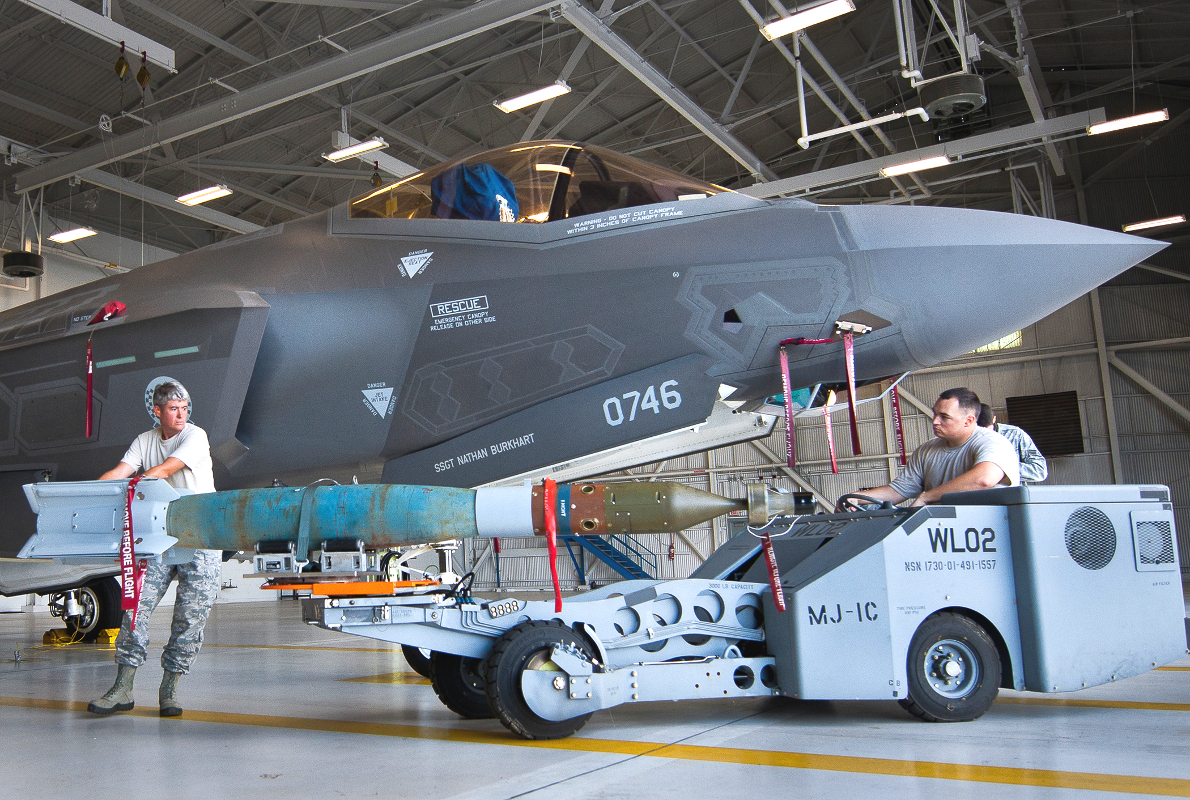
Harris did say that the Air Force was committed to avoiding any groundings after 2025 with the rebooted re-winging program, but then said that his service was uncertain about maintaining any more than six A-10s squadrons in total through 2030. This reflects plans to increase the total size the three active duty squadrons from 18 to 24 airframes and add an additional aircraft to three more reserve component squadrons.
Of course, what Harris did not explicitly say is that this would mean the permanent retirement of the remaining more 80 “thin wing” A-10s the service has not yet budgeted to upgrade, as well as the shuttering of three of the present nine Warthog squadrons. We at The War Zone had already noted that this reality appeared to be increasingly inevitable.
During the hearing, McSally was understandably incredulous of the Air Force’s plans. She questioned the service’s rationale and whether or not it would hamper its ability to meet demands for the ground attack aircraft in the immediate future.
“How would we provide that capability to the combatant commanders if we went down to six?” she remarked. “I just don’t see it.”
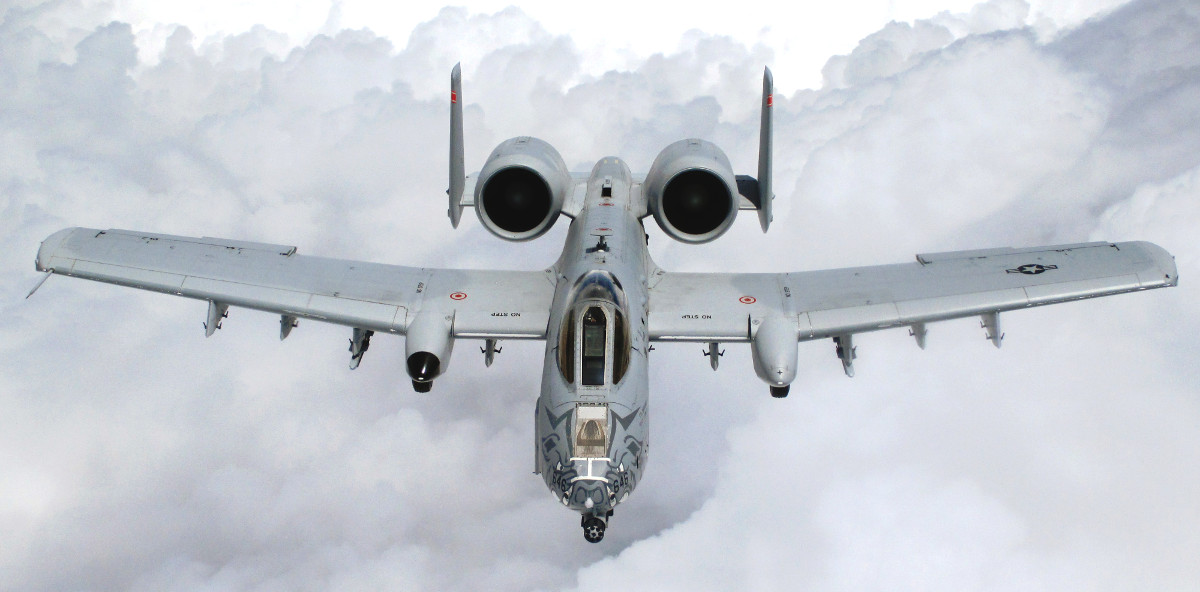
The problem is, deliberately or not, the Air Force has backed itself into a corner where there are few functional alternatives. Grounding dozens of aircraft has a cascading impact on the readiness of the squadrons involved and raises legitimate questions about the utility of keeping personnel assigned to units with few flyable aircraft, especially amidst a historic shortage of pilots and other personnel.
As we here at The War Zone have repeatedly stressed for years, the battle over the future of the A-10 is still very much active. But it increasingly appears that dozens of Warthogs are headed for the boneyard and there might not be much anyone can do about it.
Editor’s note: Title was tweaked to reflect the fluid nature of the A-10 fleet’s flyable status.
Contact the author: jtrevithickpr@gmail.com
